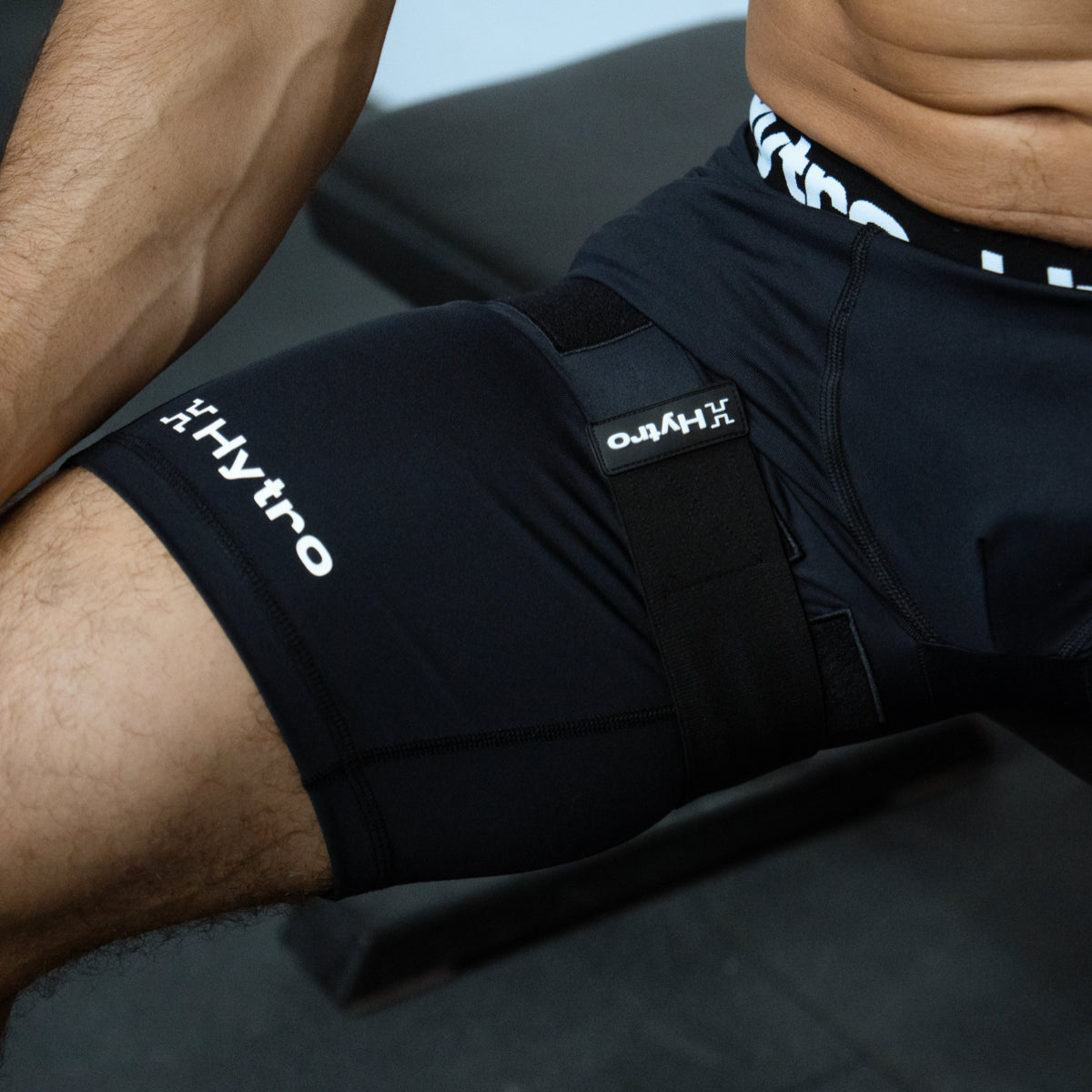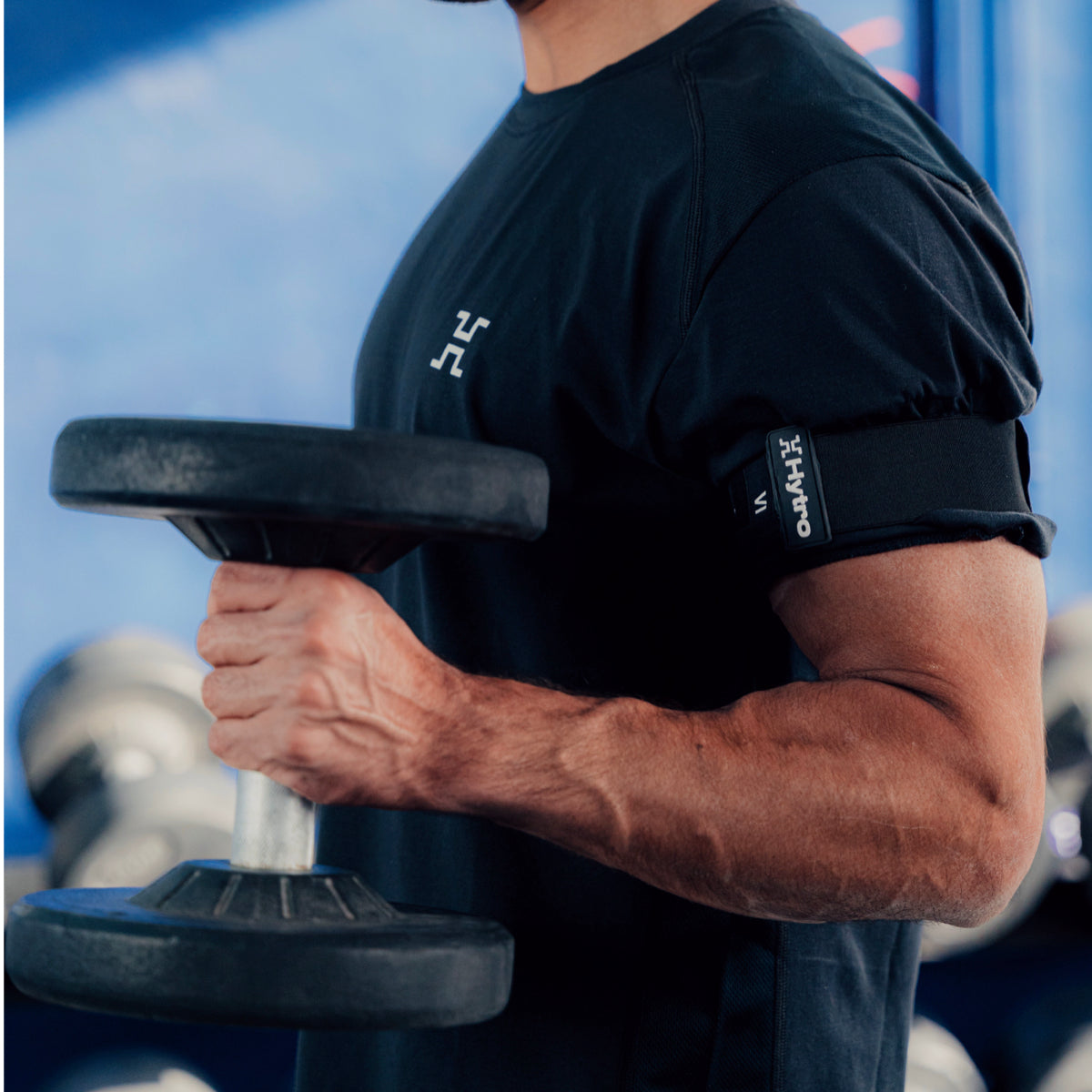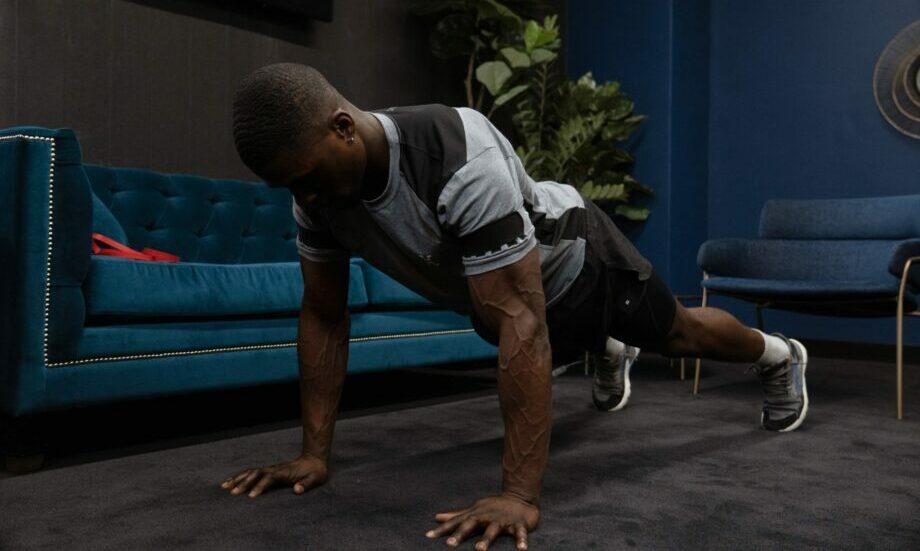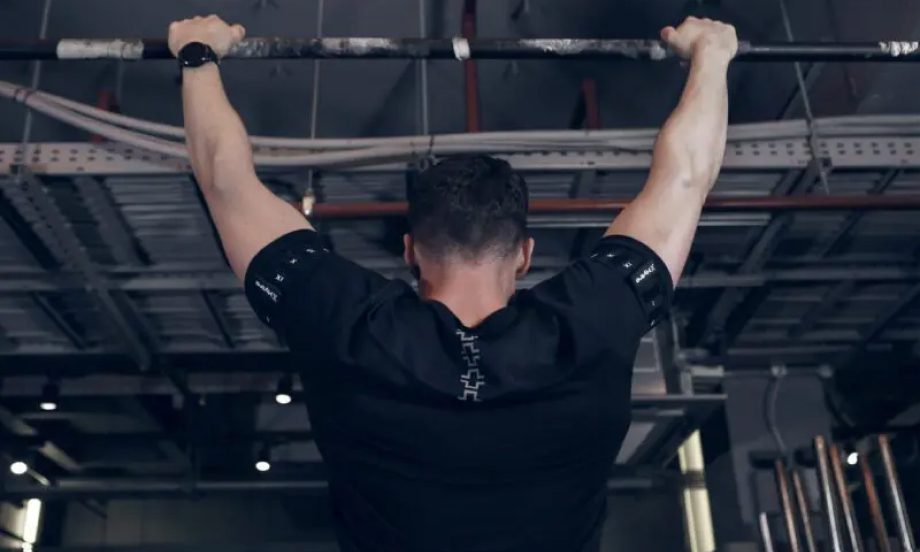At Hytro we’ve got your workout worked out – no matter your situation. We know that not everyone has great varieties of gym equipment at their disposal. While some may have access to a squat rack, many will just have a small space in their bedroom. That’s where we come in.
We’ve collated our favourite ways to add muscle without weights, including specific exercises, the science behind bodyweight training and, of course, Blood Flow Restriction. Does growing muscle from your bedroom still sound crazy? It won’t by the end of this article.
How do muscles get bigger?
Building muscle mass – known as hypertrophy – takes time and repetition. When a muscle is stimulated it recruits muscle fibres to contract the muscle, which then results in movement of the limb. The greater the force, the more fibres that are recruited. When a muscle contracts repeatedly under load, cell swelling occurs within the muscle fibres. Micro tears also appear, which must then be repaired. The body does this by increasing protein synthesis, which is where the real gains in strength are locked in.
There are three ways to bring about these physiological changes: by creating mechanical tension, metabolic stress or micro-trauma.
Mechanical Tension: When the muscle is loaded with enough resistance, tension increases. Weightlifting achieves this, but so too does working with resistance bands or at bodyweight.
Metabolic Stress: Muscle fibres are split between slow-twitch (type I), and fast-twitch (type IIA and type IIX). As fast-twitch muscle fibres contract there is a gradual build-up of waste products (metabolites), which place the muscle under stress. This stress triggers the release of hormones responsible for muscle growth, including increases in growth hormone secretions from the brain. Ultimately, muscle protein synthesis (MPS), the central regulator for muscular hypertrophy, is up-regulated, which results in increased muscular adaptation. This kind of reaction is a strength of BFR (more on that later).
Micro-trauma: Strenuous exercise damages the muscles and creates small tears in the tissue. While that may sound scary, the reality is that such an effect actually causes hypertrophy. That’s because the body overcompensates when repairing the muscle, increasing muscle protein synthesis to repair the affected area.
As can be seen from the above, lifting weights builds muscle but it is far from the only way of producing significant results. Working without weights – using either resistance bands or just the weight of your body – can also lock in big gains.
The benefits of bodyweight training
- Working at body weight allows you to focus on your form, ensuring that the correct muscle groups are targeted, movements are efficient and reduce the risk of injury. With bodyweight training, muscle damage is far less common than with resistance training due to the reduced weighted loads used in sessions, meaning less time required for muscles to recover.
- Bodyweight exercises tend to allow a full range of motion, helping joints to move freely and also working other areas of fitness, such as flexibility, stability, coordination and balance. Stabilising exercises in particular, such as planks, work many smaller muscles which aren’t usually hit with weight training.
- When you remove resistance, the more compound and functional movements of bodyweight exercises can be much more controlled, with heightened bodily awareness and engagement of multiple muscle groups – especially in typical bodyweight exercises such as push-ups and squats that utilise the core muscles.
- Most importantly, bodyweight training gives you the ultimate freedom. Busy day and don’t have the time to travel to the gym? Find a space and get moving. No equipment nearby? No worries! Your whole body can still have a decent session with notable gains.
How to get the most out of bodyweight exercises
Just like working with weights, using bodyweight exercises only works if you incorporate progressive overload. Muscles need to be challenged to create the conditions for hypertrophy. As the body adapts to your workout, the challenge lessens. To counteract this, progressive overload places increasing demands on the body.
Increasing the sets or reps is an easy way to achieve this, as is reducing the rest time between sets or reps. However, there are a number of varied techniques that can also increase the effectiveness of bodyweight exercises.
- Adding a ‘hold’ to your exercises provides a challenge by discharging the elastic energy of a muscle. Hold for a few seconds in the down position of an exercise, then complete the other half after.
- A ‘half rep’ is just what it says on the tin. Rather than moving through the full range of motion that a rep offers, you go just halfway. This allows you to target certain muscle groups, maintain constant tension on the working muscles and prevent them from having a break. Use half reps in partnership with full reps.
- By reducing the contact your body has with the floor, you increase the level your muscles work at. Try exercises such as a plank with an arm or leg raised.
- Working on just one side also focuses the tension in a more specific muscle group as that side must work against all of the load.
- Add an incline or decline to your reps. This works particularly well on exercises such as press-ups and bench presses. Due to the altered angle, the exercise becomes more difficult and also works for different muscle groups.
And then, of course, there’s the ultimate way to get the most from every session: Blood Flow Restriction…
BFR + bodyweight = serious gains
Blood Flow Restriction Training can be done at any time, anywhere. It can be done as a solo session or a finisher. When used correctly, it can increase muscle hypertrophy to a greater extent than traditional training methods.
When the occlusion straps of our Hytro BFR wearables are tightened around the top of the limb, it restricts the return flow of blood from the occluded limb to the body. The exercising limb swells as blood pools in the muscle, which creates cell swelling and metabolic stress. The increasing build-up of deoxygenated blood reduces the availability of oxygenated blood, which rapidly fatigues slow-twitch muscle fibres. This is where the true magic of BFR kicks in. With slow-twitch muscle fibres unable to do the job, the body recruits fast-twitch muscle fibres to contract. High resistance loads are usually required to create this effect. However, BFR allows such an effect to take place when working with only bodyweight, bringing with it all of the hypertrophy benefits such as muscle swelling and hormonal reactions.
BFR, therefore, stimulates substantial muscle growth without the need for weights or gym equipment and regardless of the exercise performed. With the training method not causing any significant muscle damage, sessions can be added to your training week at any time. Studies have even found that using BFR daily can produce significant hypertrophy in just two weeks, as opposed to approximately twelve weeks with traditional training methods.
Find our favourite BFR bodyweight exercises below.
6 bodyweight exercises to get stronger
We’ve picked out some of our favourite bodyweight exercises that come with the prospect of serious reward:
Squats
Want to get quicker? Then squat. Stronger? Squat. More powerful? Squat. This one movement pattern is highly effective for targeting a wide range of muscles in the upper and lower body – with or without weights. Form is important: keep your head up, torso straight and core engaged. Add variety to target other muscle groups, mixing double legged squats with split squats or pistol squats.
Pull-ups
There’s no better way to build upper body muscle than with the simple pull-up. Hit your shoulders, chest and back with a wide grip, narrow grip and reverse grip pull-ups.
Push-up
Push-ups target your chest, core, biceps, triceps, and deltoids. Race through your sets (with good form) to get a cardiovascular benefit or take it slow and steady to focus more on strength. Holds work well with this exercise. Mix up your grip, using wide, narrow or neutral to target different areas.
Pike press
From the same starting point as a press-up, bend your waist and lift your bum up so your body becomes a V shape, with heels off the floor. Keeping your back straight, bend at your elbows and lower your head to the floor. Just before it touches, push back. Congratulations, you’ve just completed a pike press! Increase the reps and sets to target your shoulders, as well as your chest and arms.
Dips
Mainly working the triceps, bodyweight dips engage the core and are effective in building upper body strength. Start sitting with knees raised and feet flat on the floor, then push your upper body up so that it is at a 45-degree angle. Keeping your bum off the air, dip up and down for an efficient workout. Looking to make it tougher? Use the stairs or a rail to increase the range of the dip. You can also lean into the pose more to work your chest to a greater extent.
Reverse lunge
Hamstrings, glutes and core muscles are activated with this movement that values front leg stability, improving balance and coordination. From a tall standing position, thrust one leg straight back as far as you can reach. Land on the ball of that foot. Your front leg will now be bent at the knee. Make sure the knee never goes past the toe to prevent strain. Upon making good contact with your back foot, push back into the start position. Increase the difficulty by driving the working leg forward and pushing up to the chest before returning to the starting position.
What are you waiting for?
Many athletes rely solely on bodyweight exercises for strength and power. While resistance training is great, so too is bodyweight training – especially when heightened with Blood Flow Restriction. All six of our favourite bodyweight exercises can be significantly improved by our BFR wearables, maximising your results.








Leave a comment
This site is protected by hCaptcha and the hCaptcha Privacy Policy and Terms of Service apply.